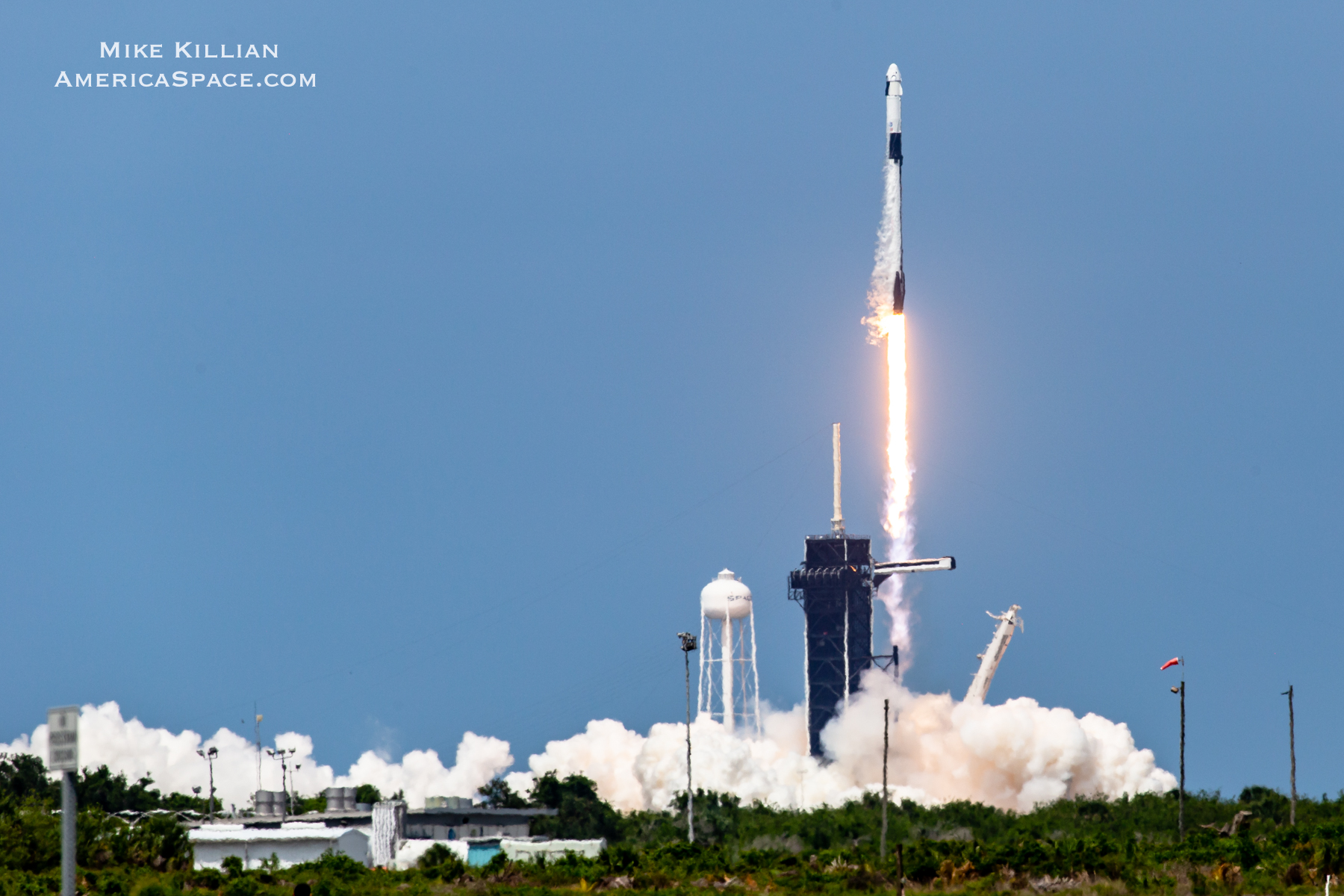
It’s rare that you can time a moment in history to a single split-second. But last Saturday, that split-second fell at 3:22:45 p.m. EDT, when American astronauts rode an American-made spacecraft, atop an American-built rocket, and from American soil, for the first time since the end of the Space Shuttle Program, almost nine years ago. Dragon Endeavour crewmen Doug Hurley and Bob Behnken—both veterans of the shuttle era, having previously flown two missions each aboard the reusable winged orbiters—are now safely aboard the International Space Station (ISS) and in recent days have offered many words about the experience of riding an entirely new booster, the Falcon 9, for the first time.
But as recounted in yesterday’s AmericaSpace article, their launch on Saturday marked the seventh different U.S. booster to have carried Americans into space in nearly six decades. From the U.S. Army’s converted Redstone missile which lofted astronauts Alan Shepard and Virgil “Gus” Grissom on a pair of 15-minute suborbital “hops” in May and July 1961 to the mighty Atlas which put John Glenn, Scott Carpenter, Wally Schirra and Gordon Cooper into Earth orbit between February 1962 and May 1963 and to the Titan II which ferried ten pairs of Gemini flyers between March 1965 and November 1966, Americans have a long heritage of braving the fury of these fearsome beasts. Yet with the dawn of Project Apollo in the late 1960s, flying in space suddenly got bigger, far more complex and infinitely more powerful, as astronauts rode the Saturn IB and the mightiest rocket ever brought to operational status, the only vehicle to have sent humans to the Moon: the gargantuan Saturn V.
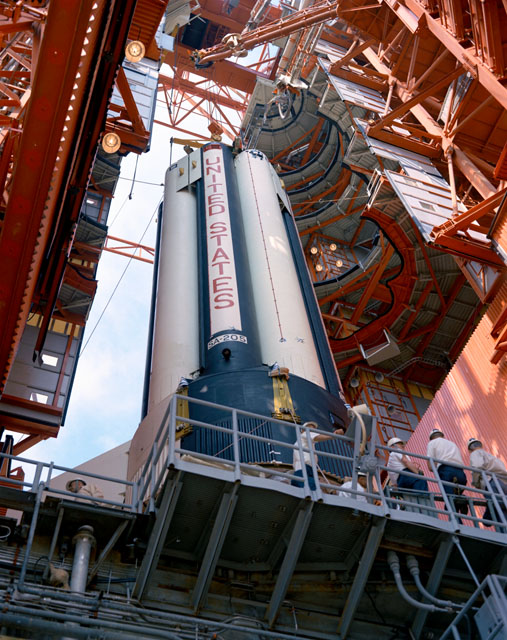
The powerful Saturn IB should have carried ill-fated Apollo 1 astronauts Grissom, Ed White and Roger Chaffee into orbit in February 1967, but the appalling tragedy which engulfed them a few weeks earlier forever shattered that hope. In October 1968, Apollo 7 crewmen Wally Schirra, Donn Eisele and Walt Cunningham became the first humans to ride the booster they had nicknamed “the big maumoo”. The Saturn IB’s 1.3-million-pound (590,000 kg) weight was only a little less than the 1.6 million pounds (725,750 kg) of first-stage thrust, which produced a liftoff perspective which appeared laboriously slow in its early phase. For Schirra—who had flown an Atlas during Project Mercury and a Titan II during Project Gemini and became the first human to ride three different booster varieties— the sensation and G-loads were less oppressive than his other launches. In his memoir, The All-American Boys, Cunningham described almost no sensation of liftoff, aside from the fact that the mission clock had started counting.
Other crews who rode the Saturn IB in later years offered differing views. Jack Lousma, pilot of the second long-duration mission to Skylab in July 1973, noticed a very definite “heavy vibration” at T-0, which soon damped itself out and was replaced by a “chugging” sensation. Others remembered the fueling of the rocket: Skylab flyer Bill Pogue likened the sound of propellants flooding into the Saturn IB’s combustion chambers to someone flushing every toilet in the Astrodome. During the initial climbout in November 1973, Pogue’s hands—and the procedures book clasped in them—were rattling so much that he could hardly read. And the noise of first-stage ascent was so intense that Pogue and his crewmates, Gerry Carr and Ed Gibson, could hardly hear each other’s voices, even over the intercom and even cocooned inside their space suits. Gibson compared himself to a fly, taped to a paint shaker, whilst Carr felt as if he were riding aboard a train with square wheels.
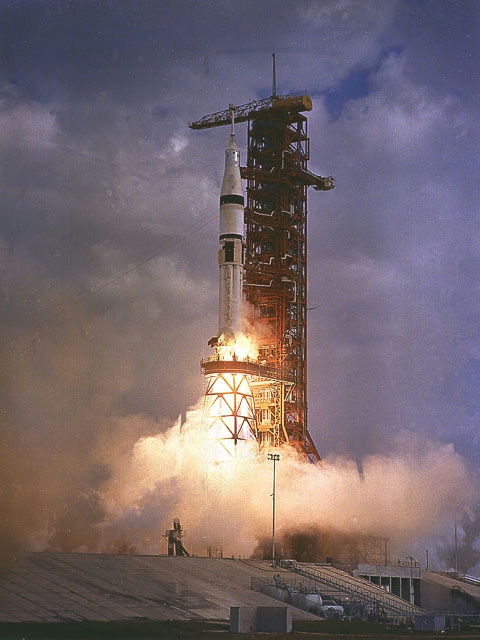
And for the last of the five crews to ride a Saturn IB, Tom Stafford considered it, by complete contrast, to be a very gentle and smooth journey, almost akin to an elevator. He became the third American after Schirra and Charles “Pete” Conrad to have ridden three different boosters and did not anticipate the ascent to be so serene. But for his crewmate Deke Slayton, who had missed out on an earlier opportunity to fly a Project Mercury mission, the experience of flying a Saturn IB proved far louder than he had anticipated and he managed to describe in just three words: “I love it!”
But the astronauts who rode the Saturn V between December 1968 and December 1972 (including four men who did so twice) flew the most powerful rocket ever brought to operational status. The sheer size and mass of the booster produced a slow, stately first few seconds of ascent—it took 11 seconds just to clear the tower—quite unlike the earlier Titan II, which sprang vigorously away from the launch pad. The first team of Saturn V riders was the Apollo 8 crew of Frank Borman, Jim Lovell and Bill Anders, the latter of whom felt he was a helpless prey in the maw of an angry dog. Borman recalled the staging from the cutoff of the S-IC first stage to ignition of the S-II second stage as exceptionally violent, producing a motion which flung them headlong towards the instrument panel. Apollo 9’s Dave Scott likened it to riding a huge spring, whilst Gene Cernan of Apollo 10 could only describe the guttural roar of first-stage flight as “absolutely scary”. Others compared the sound to a distant, muted thunder.
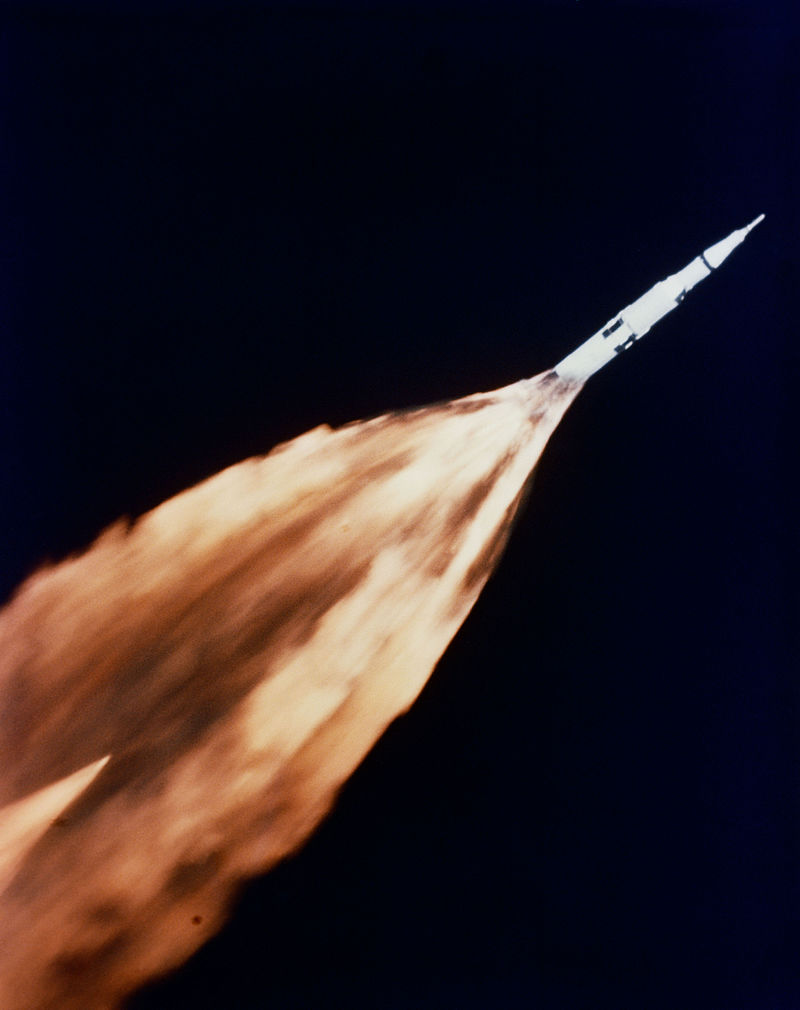
The 30-year Space Shuttle Program, which elapsed from April 1981 to July 2011, saw more than 280 American men and women ride orbiters Columbia, Challenger, Discovery, Atlantis and Endeavour into low-Earth orbit. For STS-1 Commander John Young—the only astronaut to have flown the maiden voyages of two brand-new space vehicles—and Pilot Bob Crippen, the roar of the three Space Shuttle Main Engines (SSMEs) got their attention, but it was the punch-in-the-back ignition of the twin Solid Rocket Boosters (SRBs) which assured them that they heading out of town in a hurry. Many astronauts over the years compared the liquid-fueled engines as having a smooth, “electric” characteristic, particularly during second-stage flight after the SRBs were gone. But during the initial boost off the pad, the SRBs pounded chests with their powerful staccato crackle.
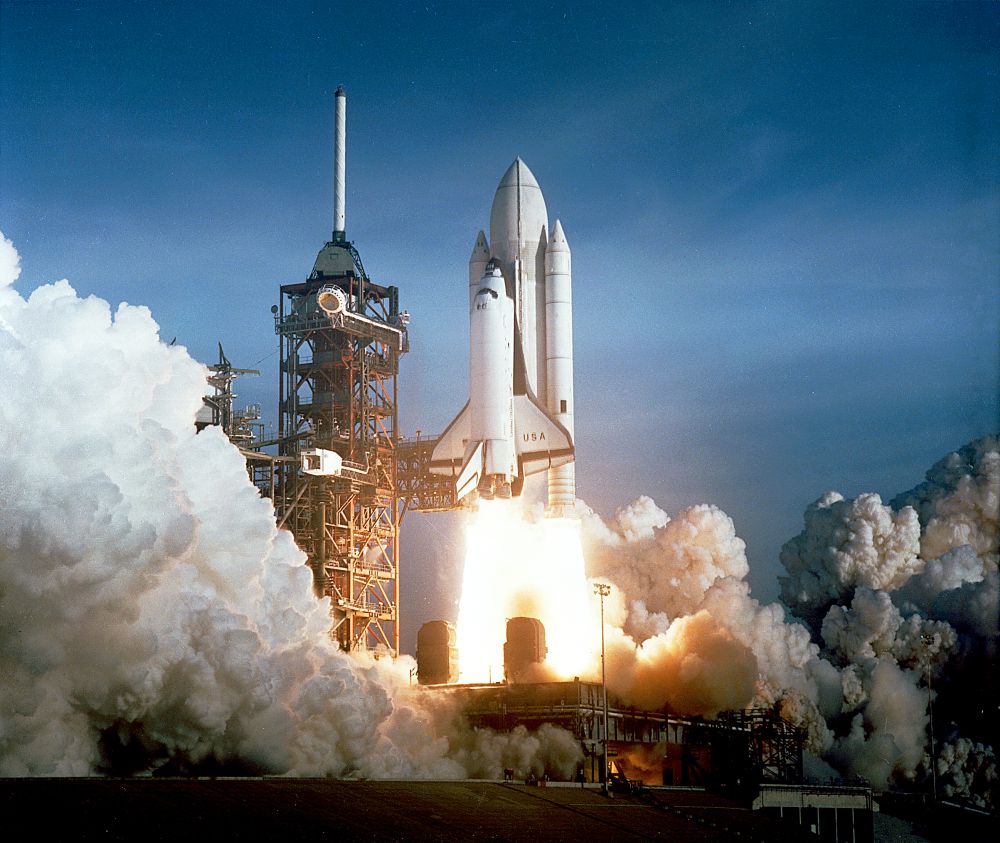
Veteran astronaut Jerry Ross, who secured a record for having flown the shuttle as many as seven times, compared the instant of liftoff as “somebody taking a baseball bat and swinging it pretty smartly and hitting the back of your seat; a real bam”, whilst Charlie Walker—who sat downstairs on the orbiter’s middeck for three missions between August 1984 and November 1985—described the “huge” acoustic level in the cockpit and declared that the crew would be deafened if not for the insulation of their helmets and suits.
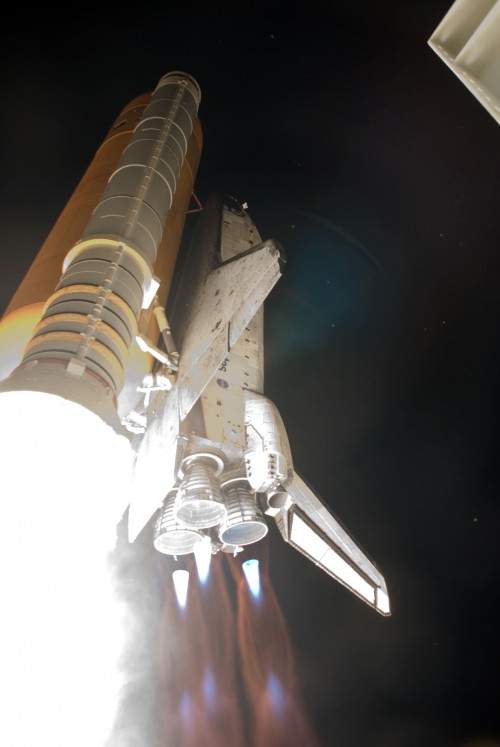
In the first few seconds of STS-1, Young and Crippen’s ride was so violent that they could hardly read their instruments, but after the roll program maneuver had been executed to put Columbia onto her back the vibrations lessened. Having flown both the Titan II and the Saturn V, Young became the fourth American to fly as many as three different U.S. launch vehicles. He compared Columbia’s rise from the pad as much less rapid than his earlier launches, but noted the noise of the wind—like an ethereal scream—outside the cockpit as they punched through the low atmosphere. The crackle of the SRBs tailed off gradually in the seconds leading up their separation, and with them gone it became much easier for the astronauts to flip switches and read their displays. It was a sensation echoed by many other astronauts over the years.
Some of that echo came from Hurley and Behnken themselves, who had both flown two shuttle missions in their earlier careers. Their flight atop SpaceX’s Falcon 9 had no solid-fueled element, which took away the roughness of the shuttle’s first-stage flight and added a degree of smoothness. “Generically, the Falcon 9 is a liquid-fueled rocket,” said Hurley. “It was a much smoother ride as it was a liquid engine.” That said, however, the two men conferred between themselves during ascent to share their perspectives. Behnken noted that the ride was a little rougher on the Merlin 1D+ Vacuum engine of the second stage and “definitely felt” a clunk associated with the separation of the first and second stages. Hurley added that there was a sensation of going from 3 G to zero-G for perhaps a half-second at the instant of staging. Then the second stage ignited and they received another push. Both astronauts intend to discuss their experience with the SpaceX engineers during their debriefings after they return to Earth later this summer.
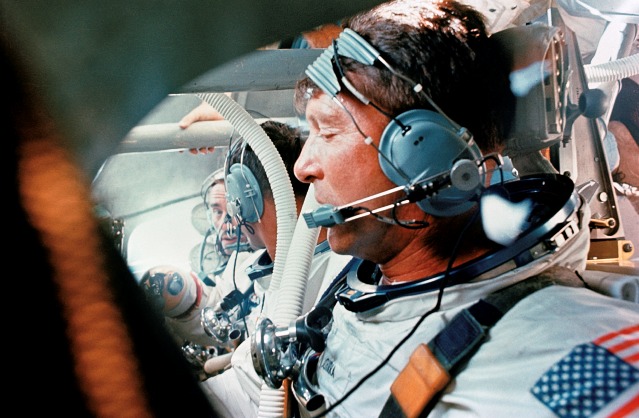
All told, Saturday’s launch raises to seven the total number of U.S.-built rockets which have put Americans into space since May 1961. Twenty-one astronauts (including Hurley and Behnken) have now flown two different U.S.-made rockets and four men—Wally Schirra, Charles “Pete” Conrad, Tom Stafford and John Young—have flown three.
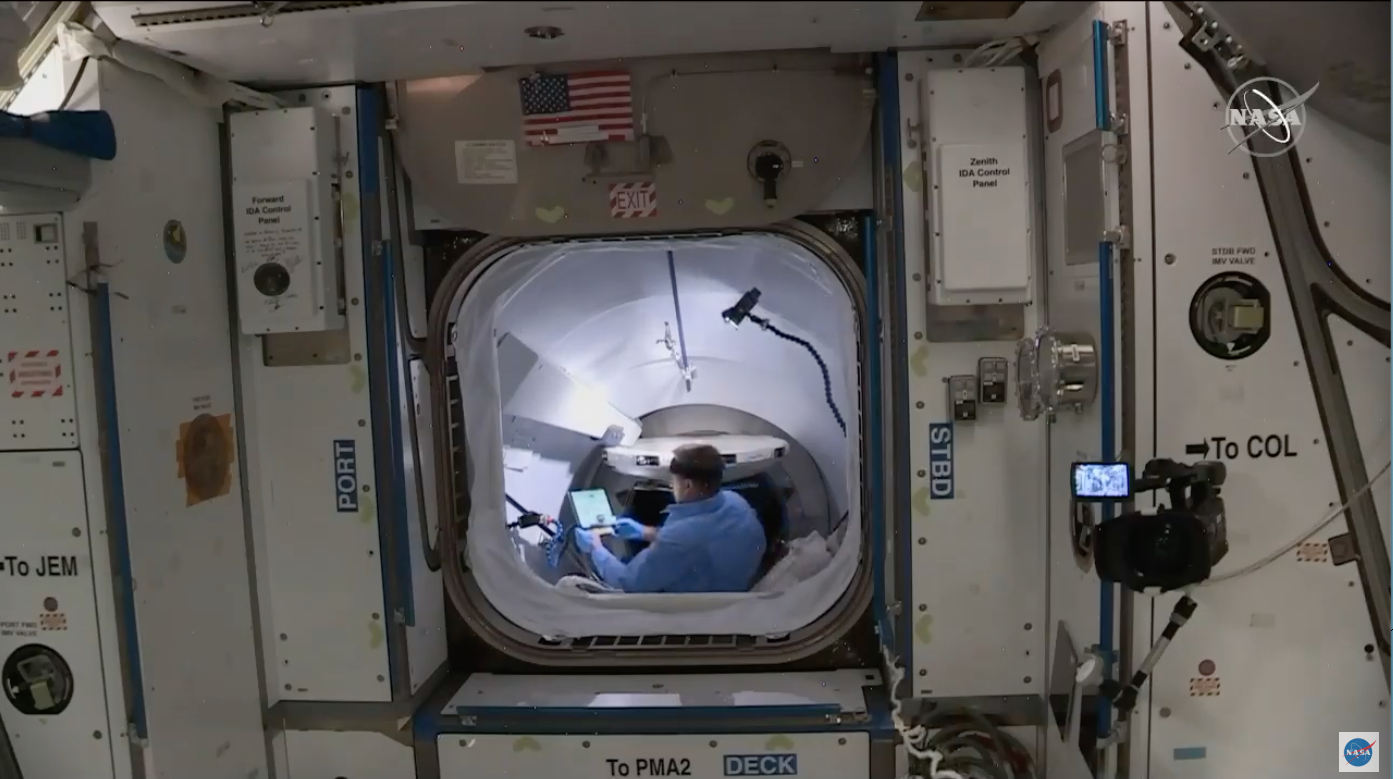
But of course, since the flight of Norm Thagard to Mir in March 1995, another 35 Americans can add a shuttle launch and a launch aboard a Russian Soyuz rocket to their tally. They include One-Year crewman Scott Kelly, all-time female spaceflight record-holder Peggy Whitson and the station’s incumbent Expedition 63 skipper Chris Cassidy. And when Boeing’s CST-100 Starliner makes its first crewed flights next year, NASA veterans Mike Fincke and Suni Williams—both shuttle and Soyuz veterans—will join Schirra, Conrad, Stafford and Young in having flown three discrete boosters and aboard three discrete space vehicles.




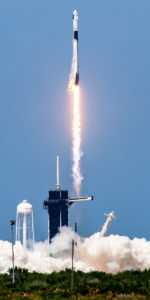
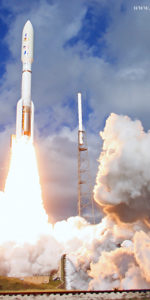
Very interesting article. I would like to also hear the perspectives of our astronauts who rode the Soyuz booster.
Yes indeed, I wanted to know what it was like to ride the F9 vs. those other beasts, so thanks! Maybe an addendum re the Soyuz?
If the subject is riding rockets, there are two other scenarios that should be mentioned.
The crews of Gemini 10 (Young and Collins) and Gemini 11 (Conrad and Gordon) used the Agena target vehicle that was docked to their Gemini spacecraft to reach much higher orbits.
Also the Apollo crews that lifted off the surface of the moon rode the lunar module ascent stage into lunar orbit.
A ma connaissance seuls 3 et non 4 hommes se sont élancés vers la lune à 2 reprises avec Apollo: Young a10 a16, Cernan a10 a17, Lovell a8 a13